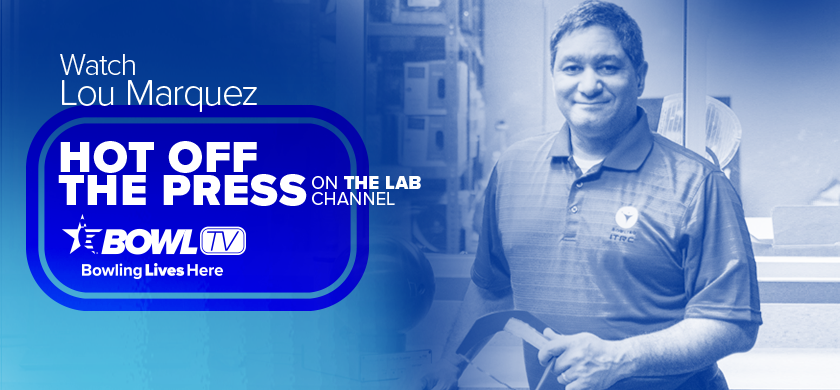By Lou Marquez on Aug 22, 2019 1:19:50 PM
As we continue to talk about lane play and think back to having gone over the actual materials (wood vs. synthetic) and all the markings and their meanings on the lanes, we need to get into the invisible component of all this: the oil.
 I brought in Stephen Padilla, USBC director of coaching, to help me with this often mystical area of the game.
I brought in Stephen Padilla, USBC director of coaching, to help me with this often mystical area of the game.
So, if we can't see what we're competing on but we know the oil pattern is very important when it comes to how we're going to play, how do we determine the length of that pattern?
The easiest way, as Stephen says, is to look at a lane sheet with all the information we need on it: the shape, the volume, the length and every other detail of the pattern. When you have access to a lane sheet, it can give you a good idea of what to expect out of your ball reaction, but you won't know for sure until you roll a ball.
Because not every tournament or league gives players access to lane sheets, let's assume we don't have one. How can we figure out how far down the lane the oil is applied?
Stephen tells us your bowling ball is the only tool you have to determine what you're bowling on. You have to roll a shot and, just as important, you have to watch what the ball is doing as it moves toward the pins.
Don't roll just any shot though. Slow it down. If you practice at normal speed, you may be expecting your normal ball reaction. If the lane pattern is just a couple feet different (either longer or shorter), that difference won't be magnified at normal speed. That is, you may not see a difference and you can't learn from it. By slowing down your approach, or even standing at the foul line without an approach, and rolling a slower shot, it will be easier to see the differences down the lane and will teach you a lot more about what you may need to do to adjust.
Determining Volume
You can get a bit of an idea as to the volume by looking at the oil rings on your ball. However, if you don't have a baseline for what a "normal" amount looks like for you, you won't be able to determine if what you're bowling on is heavy or light. Thicker oil bands often indicate heavier oil, but again, you need to establish a baseline so you know what to compare.
With this, though, we need to keep in mind that the ball motion you're seeing on the lane is the true measure for what you're trying to determine.
Pre-Event Preparation
All these tips are meant for practice prior to your tournament or league. Since the oil changes with every shot that goes down the lane, you need to give yourself a good idea of what to do to start. From there, as the lanes change, you can adjust much more easily if you were in the right place to start.
Lou




comments